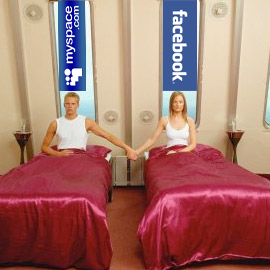Do you vid? The Facebook rumors might be true.
Do you vid?
Do you offer one-on-one conversations with your clients through Skype? Do your clients want you to see them too? Well there might be another platform coming out for you to vid.
Facebook might be integrating video chat into their chat platform. There are rumors, coming from the discovery of video code in the Facebook platform, that FB might be integrating video chat into their chat application.
Video chat has been more of a “when” rather than an “if” for a long time but it is possible that our wait is coming to an end.
With one-third of the U.S. population on Facebook, there is a better chance that your friends are on Facebook chat rather than an email oriented platform like AOL, MSN or Google. And of course integrating FB chat into outside platforms like iChat and AIM just increase the reach and usability. This makes FB a likely platform for chat.
The integration of group chat into the new FB groups, and being able to have email announcements stream into your chat box, has just increased the attractiveness and probable development of the chat function.
Facebook would be a very easy platform for transferring conversations. Though there are many Skype users out there, there are pleanty of people who are still not on it. If you were networking on Twitter and wanted to move your conversation from 140 characters to a vid chat you could send someone your Facebook link. Once they friend you, you start your video chatting. Not only does this provide an easy way to chat but you have just expanded your network.
Through creating the cross-network relationship you have now increased your reach and can communicate with your clientele in more ways than before. And of course if you want to build a strong client base and really grow the profitability of your business, your ability to connect to your clients on as many platforms as possible is an important key factor.


 So often in social media we
So often in social media we  Cyber Monday is a notoriously big online shopping day. Why does that have to exclude adult shopping? If you have a site and you sell something, then you should be taking advantage of the buzz about Cyber Monday. Adult sites can use this opportunity as a great tool for driving sales, making money and building your network.
Cyber Monday is a notoriously big online shopping day. Why does that have to exclude adult shopping? If you have a site and you sell something, then you should be taking advantage of the buzz about Cyber Monday. Adult sites can use this opportunity as a great tool for driving sales, making money and building your network.



 Facebook owning the rights to our photos is something most of us never think about when we use it. But if your photos are part of your business or professional image, then this might be a big concern for you.
Facebook owning the rights to our photos is something most of us never think about when we use it. But if your photos are part of your business or professional image, then this might be a big concern for you.